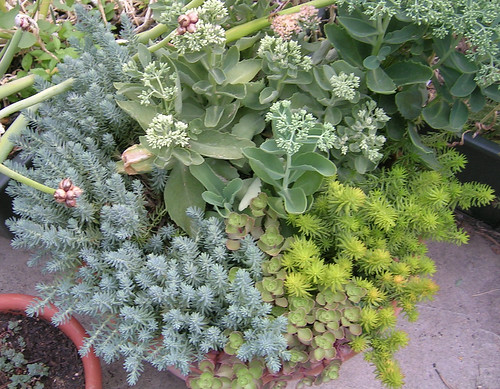Slugs eating your peppers, slugs eating your Hosta, thank god you are not in Florida or you might find them eating your house. Haven’t heard of this one yet? Google slugs in Florida – you will be stunned.
Since this is Northeast Ohio we will not worry about the stucco or drivet and get back to the garden. Vermiculite is one of the most natural products you can use to deter slugs, apply it liberally around the plant in question. You will want to make sure you have applied it in all areas a slug may find to gain access to the plants stalks or leaves. Vermiculite is very sharp as it is normally used to help break up clay soils or soils in need of more macro and micro pores. Since the material is sharp the slug will not cross it, as it will cut the slug’s tender skin. There are other repellents such as a cayenne pepper spray, possibly Neem tree oil, or as my botany professor in college use to say – slugs have a divinity for Busch beer. Set a pie pan in the ground so the lip of the pie pan is at soil height. Pour Busch beer into the pie pan, filling it about half way, the slugs will go in to get a swig and get trapped inside as they imbibe way too much. The professor was very firm about the brand of beer.
Chalk, not the kind you would write on a chalk board with – well if you crushed it – it is much easier to purchase chalk you would use to fill a plum line tool. Chalk dust. An ant will not cross a pile of chalk. If you want to keep ants out organically, fill any cracks they are entering through with chalk, create a chalk border. Install the chalk dust before you re-putty. The ants will chew through the putty; they will not chew through the chalk. Ants will not cross the chalk because they have a sticky type of mechanism on their legs, which grants them the ability to climb. The chalk covers this mechanism and inhibits them from climbing. The ants are very aware to avoid the repercussions of encountering chalk, as it is not easily removed from their bodies.
Your Colorado spruce has lower limbs that are dying back, what is going on? Many things could be happening and without seeing the tree it is hard to know for sure. First questions – are the limbs touching the ground? The lower limbs of a Colorado spruce or a Blue Colorado spruce will typically die back if they are allowed to have too much contact with the ground. In many instances these limbs are covered with mulch in the spring, discovered in the summer and dusted off hoping for the best. What about this one, the lower limbs hang over the bed edge and the lawn mower keeps hitting the edges. Though if these are not the culprits, check for galls on the limbs and twigs or swollen areas, curling of the new shoots, insect activity, Dark spots or sooty looking areas. Your tree will always tell you what is ailing it you have but to listen.
Dry area –Throw down some rocks call it a garden and let’s go home – feeling something like that? There are many options for dry areas. Once established, English Ivy will take over the driest of areas and move on to conquer the rest of the yard while exclaiming what dry area? Chameleon Spurge is very aggressive but not as aggressive as the English Ivy. It has much better groundcover appeal as it is variegated with crèmes and pink hues and did I mention fragrant? If you have a hillside you need to cover and want to approach it artistically you can use a combination of Sedum Angelina, Sedum Blue Spruce, Dragons blood Sedum and Thymus minor. Plant them in groups of three to five, of the same variety, depending on the space and create a patchwork or a quilted pattern so to speak. Once established, this hillside planting will not disappoint.
Have a question? Don’t be shy – write in. I have a feeling you’re not the only one with this question.
Remember a garden is a place where you can be free to experiment and learn, play and grow breathe out and breathe in – Feel the FREEDOM of being YOU!!




